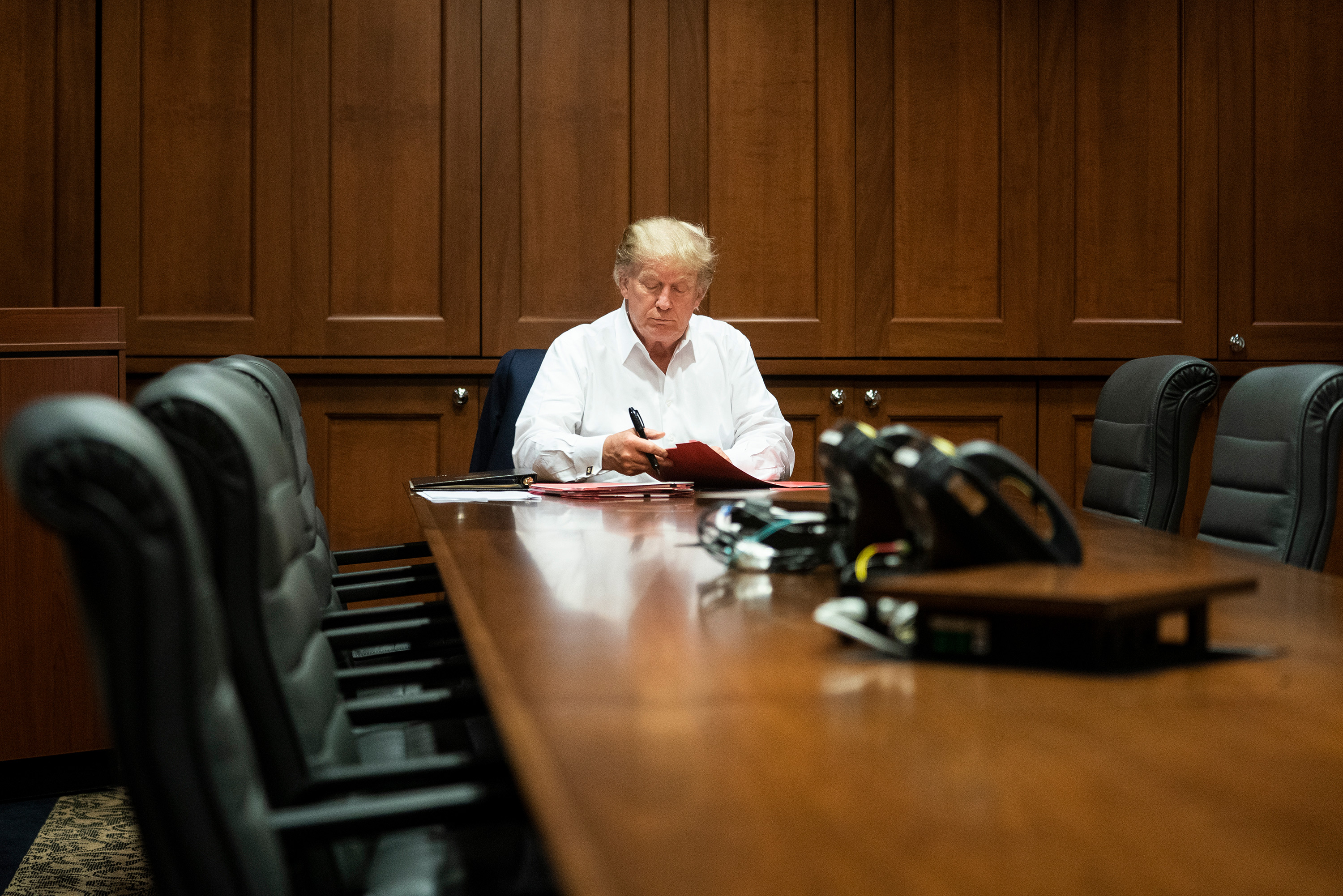What’s next for Trump? Ten days of isolation or the campaign trail?

US President Donald Trump tweeted today that he’ll leave Walter Reed National Military Medical Center at 6:30 p.m. after a three-day stay.
The question now: With the campaign in full swing, will Trump remain isolated in the White House as government scientists advise, or will he exempt himself from the rules?
According to the Centers for Disease Control and Prevention, a covid-19 patient should remain in “isolation” until he or she has met all of the following criteria:
- At least 10 days have passed since symptom onset
- At least 24 hours have passed since resolution of fever without the use of fever-reducing medications
- Other symptoms have improved
Isolation means minimum contact with anyone else—and in Trump’s case that would mean no in-person meetings, no donor events, and no rallies, for at least another week. The reason is simple: doctors think people recovering from covid-19 could continue shedding the virus and infecting others for some time.
“Yes, he should isolate,” says Walid Gellad, a professor of medicine, health policy, and management at the University of Pittsburgh.
If Trump follows scientific advice, he’ll have to stay largely alone until at least October 12, just three weeks before the general election. If he doesn’t, the president could be open to accusations that he’s putting others at risk.
Mark Meadows, his chief of staff, told Fox News that the president “is ready to get back to a normal working schedule.” The President later tweeted “Will be back on the Campaign Trail soon!!!”
But even 10 days away from the campaign trail might not be enough to eliminate risk to other people. The World Health Organization says isolation in symptomatic patients should last at least 13 days and mandates at least three entirely symptom-free days before normal activities resume.
Another criterion sometimes used for ending isolation is two negative PCR tests, taken one day apart. It’s not known whether Trump has yet tested negative.
“Remember, ‘isolation’ does not mean ‘locked down,’ ” says Carlos del Rio, executive associate dean of Emory University School of Medicine. “The president will need to follow the CDC guidance on coming out of isolation, [but] he can be isolated at home or in the hospital. Isolation simply means that you separate the ill person.”
The White House is equipped to provide medical care and private space, but isolation is still easier to achieve in a hospital, where doctors and nurses working on covid wards wear masks, goggles, and fluid-proof gowns.
“One reason to stay in the hospital would be to ensure proper isolation and control of who and how people come into contact with him, which presumably would be much less feasible at the White House,” says Gellad. “They could ‘send him to stay in his room,’ but [I] doubt that would happen.”
The administration has been eager to show Trump in charge and at work, distributing photos of him at a big desk while in the hospital.
So it’s easy to imagine the White House disregarding isolation recommendations, just as it dispensed with wearing masks. The building is now the center of a super-cluster of coronavirus cases that’s affecting a widening circle of staff, advisors, Republican officials, and journalists.
After he tested positive on Thursday, Trump’s doctors threw the most powerful drugs they had at him, including an advanced antibody drug still in trials and a steroid usually reserved for the most severe covid-19 cases.
By Sunday, Trump was already breaking quarantine by jumping into a motorcade to wave to supporters gathered outside the hospital. Today he tweeted, “I will be leaving the great Walter Reed Medical Center today at 6:30 P.M. Feeling really good! Don’t be afraid of Covid. Don’t let it dominate your life.”
Outside observers can’t say whether Trump is returning to the White House because he’s actually recovering quickly or eager to project strength for the public. Conflicting statements from the administration and Trump’s doctors have added to doubts about when the president first tested positive, when he began feeling ill, how serious his illness is, and whether the White House moved quickly enough to stop his schedule of appearances.
If the White House and his doctors strictly do adhere to CDC recommendations, however, it could provide a clue to the actual timeline. “If they tell us when those 10 days [of isolation] end, that also means they tell us when symptoms really started,” Gellad says.
Deep Dive
Humans and technology
Building a more reliable supply chain
Rapidly advancing technologies are building the modern supply chain, making transparent, collaborative, and data-driven systems a reality.
Building a data-driven health-care ecosystem
Harnessing data to improve the equity, affordability, and quality of the health care system.
Let’s not make the same mistakes with AI that we made with social media
Social media’s unregulated evolution over the past decade holds a lot of lessons that apply directly to AI companies and technologies.
Stay connected
Get the latest updates from
MIT Technology Review
Discover special offers, top stories, upcoming events, and more.